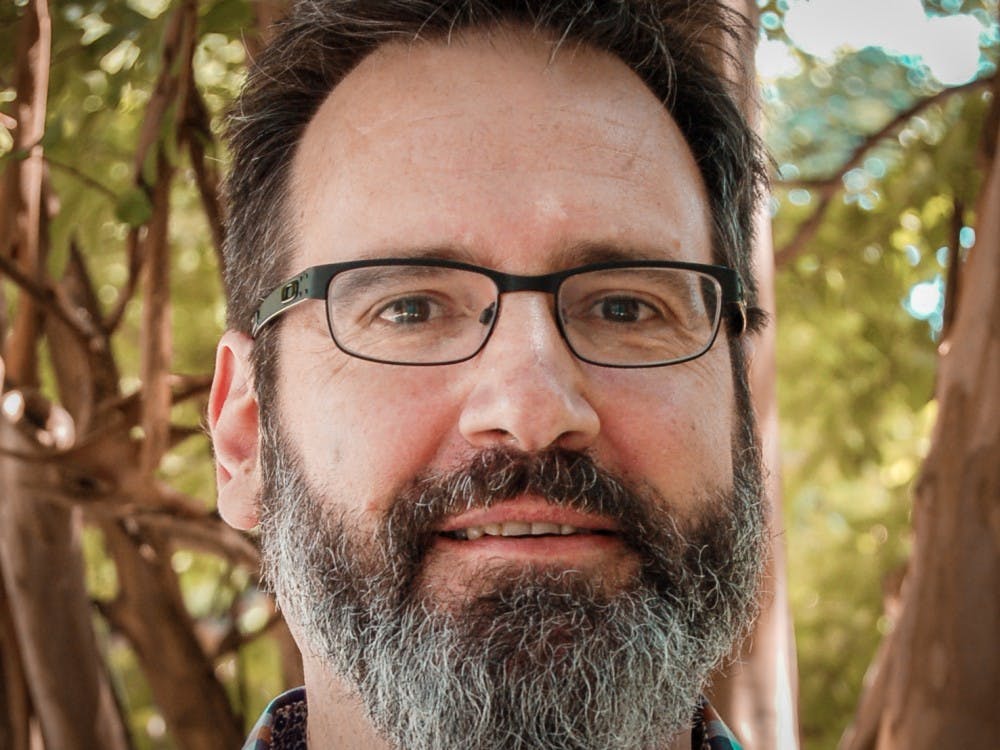Mark Kruse, Fuchsberg-Levine family professor of physics, has been researching high-energy particle physics and potential updates to the current model of the universe since graduate school. Kruse worked with Al Goshaw, James B. Duke professor emeritus of physics, to discover the top quark, the “heaviest elementary particle,” and together they were awarded the 2019 High Energy and Particle Physics Prize. Kruse sat down with The Chronicle to discuss his work with the top quark and the formation of the universe. This interview has been edited for length and clarity.
The Chronicle: What is the top quark, and where does it fit into the model of our universe?
Mark Kruse: The standard model of particle physics describes how the fundamental constituents of the universe interact. At one point it was believed that electrons, protons and neutrons were fundamental. You can form all matter with those things. It turns out experiments in the 1940s and 1950s showed that protons and neutrons were made up of even more fundamental things, and those are called quarks.
Now we understand protons and neutrons to be made of up and down quarks, and together with electrons, those constituents form all observable matter. Everything you observe is made up of up quarks, down quarks and electrons. But then, there was another generation of quarks that were identical to the up and down quark’s generation, except in mass. And there’s no reason for that. It was a complete surprise. It was subsequently found, in the 1960s and 1970s, that there was a third-generation: the top quark and bottom quark. They were much higher in masses but were identical in all other aspects. We don’t know why it exists. It turns out that the top quark is incredibly massive compared to the other fundamental quarks.
TC: Could you explain the process behind the discovery of the top quark?
MK: There were lots of experiments to find the top quark. This was one of the main goals of the Tevatron experiment. The Tevatron collides protons and antiprotons with enough energy to produce top quarks. Eventually, we were seeing evidence that top quarks were being produced. When you collide beams of protons together, a lot can come out that looks like the signature of top quarks but is due to something else.
You have to understand what the other processes are due to. These background processes occur more frequently than top quarks. We had to gather enough evidence to finally claim that we see something that was definitely not the background. There’s a lot of different ways to look for the top quarks, and so it’s the accumulation of all these ways of looking for it that takes a long time.
TC: How long did the process take and what was the hardest part of it?
MK: Years, because you don’t know what mass the top quark is, and you’ve got to look for it in many different ways. You don’t know if it’s what the standard model predicts it to be. The hardest part was really understanding the background processes and understanding where certain uncertainties come from.
TC: Why were there two different collaborating teams working on this discovery, and what was your specific role in this team dynamic?
MK: There are always two collaborations. You need two experiments because if one sees something a little bit unusual, you need independent confirmation from another one. During the discovery, I was one of a handful of graduate students that was actually doing a Ph.D. thesis looking for a top quark, and I was looking for it in a particular way.
TC: How long have you and Professor Goshaw been working together for?
MK: I did my undergraduate education in New Zealand, and then I came over to the United States for graduate school in 1995, actually at Purdue University. I was stationed at the Fermilab. At that time, Al Goshaw was the spokesperson for the collider detector at Fermilab collaboration. It was when I came to Duke in 2001 when we started collaborating more intensively.
TC: How did your research start? What first got you into physics?
MK: As an undergraduate student, I was really interested in physics, but I was more interested in the deep philosophical questions, like “why does the universe exist,” and “why are we here trying to explain the universe.” I think physics provided a theoretical means to answer very fundamental questions about the existence of the universe—not just the existence of myself or humanity—but the existence of the universe and how did it evolve into what we now know.
TC: Does this discovery change the way we fundamentally understand physics? Could this newfound understanding be applied to everyday life?
MK: It applies to everyday life in the sense that we’re trying to understand the theory or model behind why anything exists. It’s innate for us to ask questions of why we are here, or what will happen when we’re not here. How did the universe begin? In some sense, it’s trying to understand fundamental questions about our existence. In order to do that, we’re building these incredibly technologically aggressive experiments and in doing that there are a lot of other technological advances that come along with it. Medical fields now use particle accelerators. The technologies that go into these experiments often have other applications. So it’s often these other things that have a big impact on society.
Correction: A previous version of this article listed Mark Kruse as the Fuchsberg-Levine family associate professor of physics, not the Fuchsberg-Levine family professor of physics. The Chronicle regrets the error.
Get The Chronicle straight to your inbox
Signup for our weekly newsletter. Cancel at any time.

